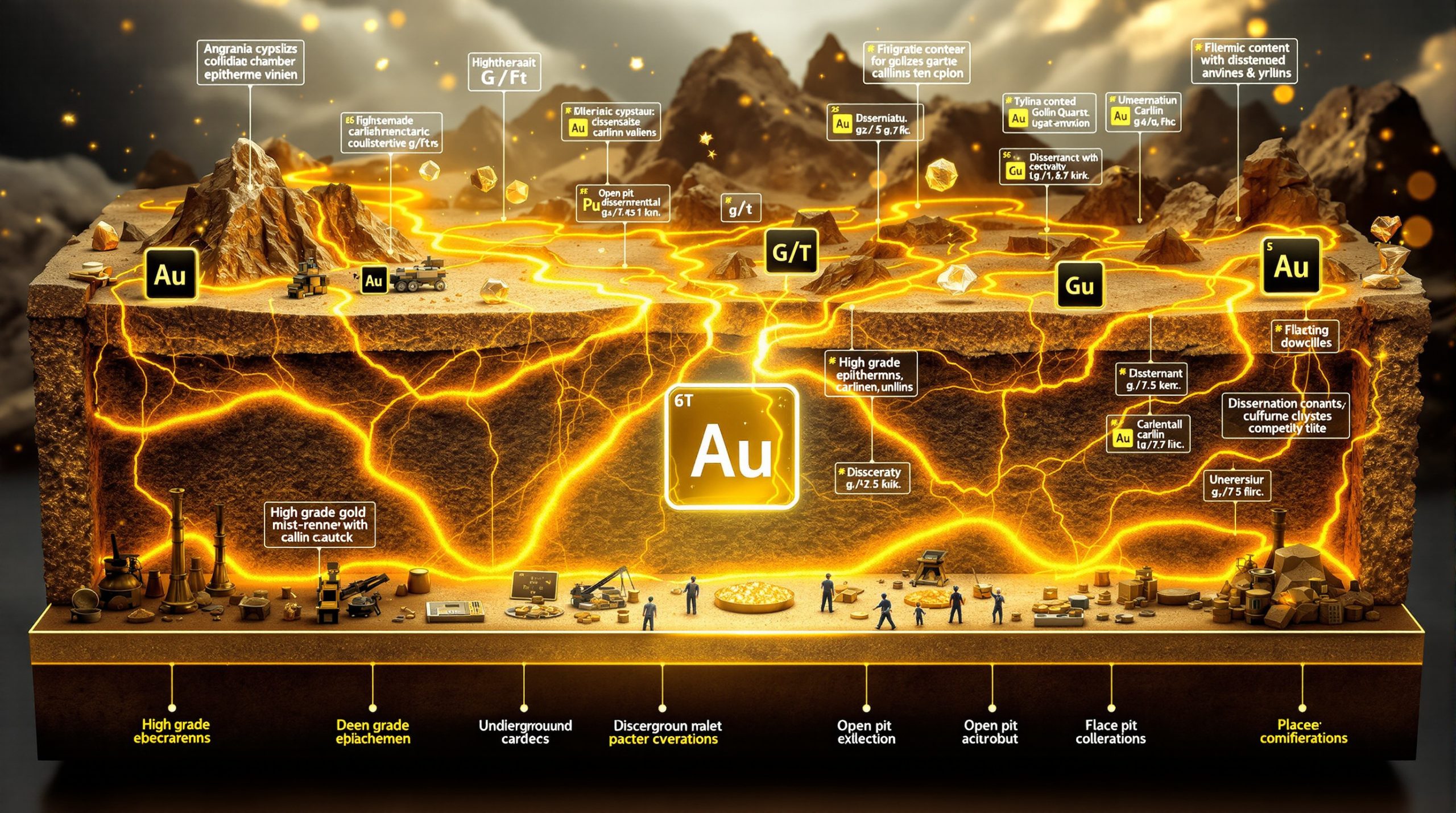Understanding Mining Stock Resilience: How Long Can the Strength Continue?
The mining sector has demonstrated remarkable resilience amid recent market fluctuations, showing strength patterns that mirror historical cycles. By examining these patterns, particularly the notable 2011 period, investors can identify key indicators that may predict future movements and prepare for potential market shifts in the mining sector.
The 2011 Mining Stock Surge: A Comparative Analysis
During 2011, mining stocks exhibited unusual strength relative to gold and the US dollar for approximately 15 trading days. This period of outperformance ended abruptly, with a single session erasing gains, followed by further declines that wiped out weeks of progress in just days.
Today's market demonstrates striking similarities:
- Current mining stock resilience has persisted for a comparable timeframe
- The relationship between miners and the US dollar index shows parallel patterns
- Technical indicators suggest similar market conditions developing
According to technical analysis by Przemyslaw Radomski (Sunshine Profits), "The history doesn't have to repeat itself to the letter, but it does tend to rhyme." This insight highlights the importance of historical pattern recognition when analyzing current miners' strength in market performance.
Key Technical Indicators of Mining Stock Performance
The current mining sector strength can be traced to specific dates:
- August 20, 2025: Beginning of pronounced outperformance
- August 8, 2025: Initial signs of relative strength against the US dollar
- August 5, 2025: Start of disproportionate rallying (exactly 15 trading days prior to analysis)
This timeline aligns remarkably with the 2011 pattern, suggesting the sector may be approaching an inflection point rather than establishing a new long-term trend.
The timing factor is particularly noteworthy – the current 15-trading-day pattern of strength precisely matches the duration observed before the 2011 reversal, raising caution flags for investors holding significant mining positions.
How Are Macroeconomic Factors Influencing Mining Stock Strength?
US Dollar Index Trends and Mining Stock Correlations
The US dollar index currently displays mixed signals but shows indications of potential upward movement based on long-term chart analysis. This has significant implications for mining stocks:
| US Dollar Movement | Typical Mining Stock Response | Current Anomaly |
|---|---|---|
| Rising Dollar | Mining stock weakness | Continued strength despite dollar resilience |
| Dollar at support | Mining stock consolidation | Disproportionate rallying |
| Dollar pullbacks | Mining stock rallies | Magnified positive response |
The dollar's resilience despite dovish Federal Reserve positioning suggests underlying strength that could eventually reassert itself, potentially challenging the mining sector's current momentum.
Technical analysts note that the dollar's comeback after declining to previous lows signals preparation for a potentially larger rally. This contrarian indicator suggests caution for mining investors who might otherwise interpret dollar weakness as bullish.
Federal Reserve Policy Impact on Mining Valuations
Recent Federal Reserve policy shifts have created a supportive environment for mining stocks:
- Dovish positioning has historically benefited precious metals miners
- Political pressure from the Trump administration for accommodative policy continues
- Rate cut expectations have been largely priced into current valuations
Bloomberg analyst Mike McGlone recently highlighted this dynamic, noting that "the precious metals market has already absorbed the positive news from dovish Fed positioning," suggesting limited additional upside potential based solely on monetary policy developments.
The fact that gold failed to rally above key resistance lines despite clearly dovish Fed signals indicates potential exhaustion in the current rally, with Radomski observing that "all the positive surprises for the precious metals market are already behind us." Understanding the US economic backdrop is crucial for evaluating the sustainability of current mining stock strength.
What Technical Analysis Reveals About Mining Stock Sustainability?
Critical Price Levels and Resistance Points
Gold's technical picture provides important context for mining stock performance:
- Recent breakout attempts have faced significant resistance
- Price action shows a verified breakdown despite temporary upward movements
- Trading opportunities have emerged within the broader technical framework
Mining stocks typically amplify gold's movements, suggesting that if gold fails to maintain momentum above key resistance levels, mining stocks could experience magnified downside. Thorough gold prices analysis can help investors anticipate potential shifts in mining stock performance.
Volume indicators during recent rallies show declining participation, a classic technical warning sign that often precedes market reversals. This pattern was also present during the 2011 cycle before significant corrections materialized.
Volume and Momentum Indicators
Current trading patterns show:
- Declining volume during price advances
- Momentum divergences appearing on multiple timeframes
- Short-term overbought conditions developing
These technical factors suggest caution is warranted despite the sector's apparent strength. The Relative Strength Index (RSI) readings for many mining indices are approaching levels that historically signaled exhaustion in previous cycles.
Technical traders particularly note that the GDX and GDXJ mining ETFs have both displayed negative volume divergence during recent advances – a pattern that occurred before the 2011 reversal and several other significant corrections in the mining sector.
How Do Different Mining Subsectors Compare in Current Market Conditions?
Precious Metals Miners vs. Base Metals Producers
The current market environment has created divergent performance across mining subsectors:
| Mining Subsector | Recent Performance | Key Drivers | Outlook |
|---|---|---|---|
| Gold/Silver Miners | Strong relative performance | Safe-haven demand, Fed policy | Potential reversal if USD strengthens |
| Base Metals Producers | Mixed performance | Industrial demand, economic outlook | Dependent on global growth trajectory |
| Rare Earth Miners | Significant price increases | Supply constraints, geopolitical factors | Continued volatility expected |
This differentiation highlights the importance of subsector selection rather than broad mining sector exposure. The relationship between different sectors can be better understood through comprehensive gold-stock market guide.
Recent market data from August 26, 2025 shows varied commodity performance with gold futures at $3,430.8/ozt (+0.59%), silver futures at $38.555/ozt (-0.01%), and copper at $4.5375/lb (+1.66%). Base metals like copper have shown particular strength on the back of supply constraints and robust demand forecasts.
Rare earth mining stocks have seen notable price increases as MP Materials halted China shipments, driving prices to two-year highs. Energy Fuels' partnership with Vulcan Elements for supplying high-purity rare earth materials further demonstrates the growing strategic importance of this subsector. Meanwhile, iron ore trends continue to influence the broader mining sector landscape.
What Investment Strategies Should Be Considered Given Current Mining Sector Strength?
Portfolio Positioning for Potential Market Shifts
Given the historical patterns and current indicators, investors might consider:
- Profit-taking strategies on positions showing substantial gains
- Hedging techniques to protect mining stock positions
- Sector rotation approaches to maintain resource exposure while reducing risk
- Options strategies to capitalize on potential volatility
For mining stocks specifically, implementing trailing stop orders at strategic levels can help protect gains while allowing for continued participation if the rally extends beyond historical patterns.
Seasoned resource investors often employ a "core-and-satellite" approach during times of market uncertainty – maintaining core positions in quality producers while actively managing more speculative satellite holdings based on technical signals.
Risk Management Approaches for Mining Stock Investors
Prudent risk management suggests:
- Setting trailing stop orders to protect gains
- Reducing position sizes in miners showing extreme outperformance
- Diversifying across mining subsectors
- Monitoring key technical levels for breakdown signals
Many professional mining investors implement a scaling approach – gradually reducing exposure as technical indicators suggest increasing risk, rather than attempting to time the exact market top.
Position sizing becomes particularly important during periods of heightened volatility. Reducing allocations to the most volatile junior miners while maintaining exposure to established producers with stronger balance sheets can help manage downside risk.
How Do International Factors Affect Mining Stock Performance?
Global Economic Indicators and Mining Stock Correlations
Mining stocks remain sensitive to international economic conditions:
- Manufacturing PMI data influences industrial metal demand expectations
- Currency movements across major economies impact relative mining company valuations
- Global interest rate differentials affect capital flows into resource sectors
The Trump administration's trade policies have created both challenges and opportunities for mining companies, with tariffs potentially supporting domestic producers while creating headwinds for those with international supply chains.
Recent Pentagon initiatives, including a $400 million investment in rare earth production, highlight the strategic importance of critical minerals and the geopolitical factors influencing mining valuations.
Geopolitical Considerations for Mining Investors
Current geopolitical factors with mining sector implications include:
- Trade policy developments affecting metal tariffs and supply chains
- Resource nationalism trends in key mining jurisdictions
- International monetary policy coordination efforts
Colombia's informal mining agreements with companies like Aris Mining demonstrate how geopolitical factors are reshaping industry dynamics, with governments increasingly seeking formalized partnerships to address illicit mining activities.
The US recently expanded its critical minerals list to include copper, potash, and silicon – a policy shift that reflects growing concerns about supply security and could drive increased investment in domestic mining operations. Understanding the broader mining industry evolution provides critical context for these developments.
What Are Expert Perspectives on Mining Sector Outlook?
Market Analyst Consensus on Mining Stock Sustainability
Market analysts offer varied perspectives on the mining sector's current strength:
Bloomberg's Mike McGlone highlights the tension between supportive monetary policy and technical resistance levels, suggesting investors should remain vigilant despite the sector's recent outperformance.
Technical analysts particularly note the striking similarities to previous market cycles that ended with significant corrections, with Radomski warning that current patterns mirror the 2011 situation that led to sharp reversals.
Long-term vs. Short-term Mining Investment Considerations
The distinction between tactical trading opportunities and strategic investment positioning remains critical:
- Short-term traders may find opportunities in the sector's current momentum
- Long-term investors should consider whether fundamentals support current valuations
- Portfolio allocation decisions should reflect time horizon and risk tolerance
Research from BloombergNEF warns of potential copper supply crunches driven by AI-related demand, suggesting that while short-term technical factors may create volatility, long-term fundamentals for certain metals remain robust.
Industry experts recommend differentiating between cyclical factors (like current technical patterns) and structural trends (such as energy transition metal demand) when constructing mining sector investment strategies.
Frequently Asked Questions About Mining Stock Performance
How do interest rate expectations affect mining stock valuations?
Interest rate expectations impact mining stocks through multiple channels:
- Lower rates reduce financing costs for capital-intensive mining operations
- Rate cuts typically weaken currencies, supporting commodity prices in local terms
- Yield-seeking investors may rotate into dividend-paying miners in low-rate environments
The market has already priced in expected rate cuts, suggesting limited additional benefit to mining stocks from further dovish Fed positioning unless actions exceed current expectations.
What indicators best predict mining stock reversals?
Key reversal indicators include:
- Divergence between mining stocks and underlying commodities
- Extended periods of outperformance relative to broader market indices
- Technical breakdowns of key support levels
- Shifts in monetary policy expectations
Volume analysis remains particularly valuable, with declining volume during price advances often preceding significant corrections in mining stocks – a pattern currently observable in several major mining indices.
How does seasonal volatility affect mining stock performance?
Mining stocks often display seasonal patterns:
- September-October historically shows increased volatility
- Year-end tax-loss selling can create pressure in December
- Seasonal commodity demand fluctuations impact specific subsectors differently
The current August timeframe aligns with historical periods of increased volatility, adding another layer of caution for mining investors as we approach traditionally turbulent autumn months.
Navigating Mining Stock Strength in Current Market Conditions
The mining sector's current strength shows remarkable parallels to historical patterns, particularly the 2011 cycle that ended with significant corrections. While positive catalysts including dovish monetary policy have supported the sector, these factors appear largely priced into current valuations.
Investors should consider that periods of extended outperformance relative to underlying fundamentals have historically been followed by corrections. The striking similarity between the current 15-trading-day period of strength and the 2011 pattern suggests caution is warranted.
Prudent portfolio management approaches include taking partial profits, implementing hedging strategies, and maintaining disciplined position sizing while monitoring key technical levels for potential reversal signals.
For those maintaining mining sector exposure, diversification across subsectors and quality tiers remains essential, as does vigilant monitoring of key technical indicators that may signal the end of the current period of miners' strength in market conditions.
Ready to Profit from the Next Major Mining Discovery?
Discover significant ASX mineral discoveries as they happen with Discovery Alert's proprietary Discovery IQ model, which transforms complex geological data into actionable investment insights. Understand why major discoveries can lead to substantial returns by exploring Discovery Alert's dedicated discoveries page, and begin your 30-day free trial today to position yourself ahead of the market.




